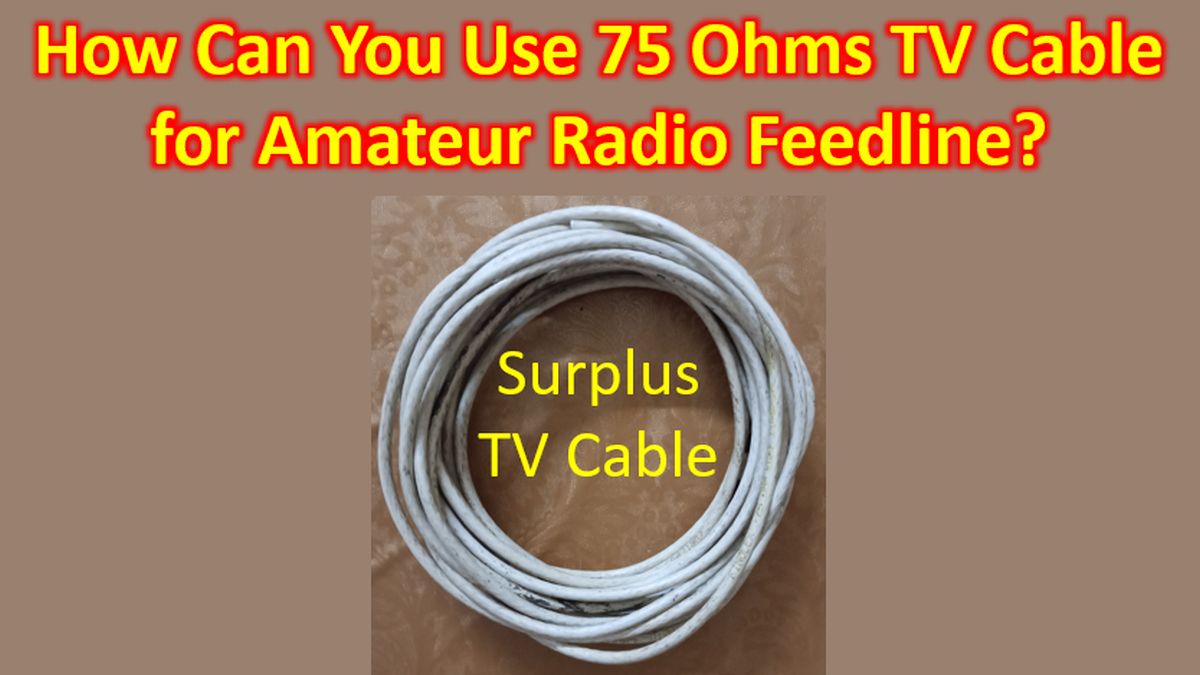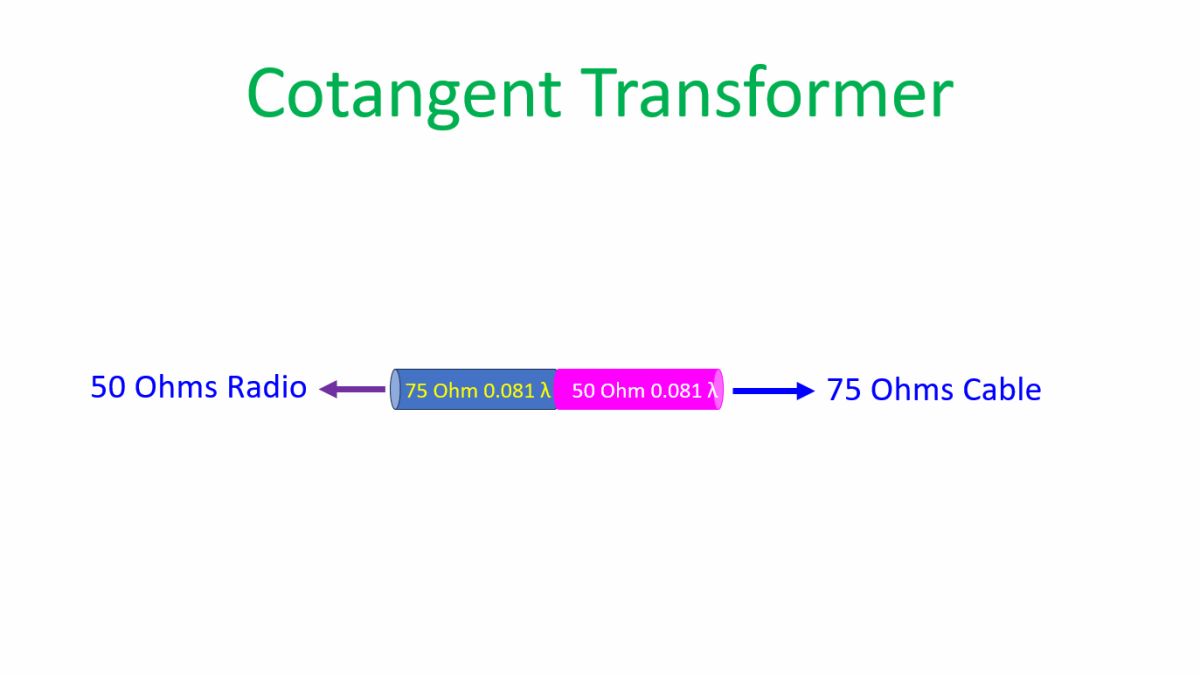How Can You Use 75 Ohms TV Cable for Amateur Radio Feedline?
How Can You Use 75 Ohms TV Cable for Amateur Radio Feedline?
I was using 75 Ohms TV cable for my homebrew 3 x 807 vacuum tube radio with 120 Watts DC input on CW and AM in late 1980s. I could work United States on CW, which is the longest distance on the globe from my region, during greyline propagation. In those days I was not aware of 50 Ohms cable and I was using a ‘horizontal dipole’ tied on the top of coconut trees, using ‘stone throw’ method. 75 Ohms cable would have been a good match for the ‘horizontal dipole’ which would be sagging in a V pattern due to the weight of the coaxial cable attached in the centre without any support in the middle. But I do not know the output impedance of my vacuum tube radio. Not sure whether tuning of the output circuit with the large metal variable capacitor and antenna coil would have corrected any mismatch. Anyway, I could work my setup without any of my final tubes going QRT for quite some time. I did measure the SWR with a homebrew SWR bridge using resistors and my analog mutlimeter and found it to be within 1.5:1 at that time. Theoretically, connecting 75 Ohms cable to a 50 Ohms radio should have an SWR within 1.5:1 only.

Coming to my second innings in Ham radio in 2023, after a gap of a decade in between, my vacuum tube radio is untraceable. I have two commercial radios. One VHF only TM 261 base station and another brand new IC 2730 VHF/UHF base station. I am using 50 Ohms HLF 200 cable which is supposed to be a clone of LM 200 cable. I get SWR of 1.1:1 on VHF for my commercial CP22E VHF antenna. While testing this same antenna on UHF, presumably working on third harmonic principle, I get an SWR of nearly 1.5:1. Still I have been able to work more than 70 contacts on low earth orbit satellites with UHF downlink and VHF uplink. I have also been able to work a few contacts on U/V satellites with UHF uplink and VHF downlink, though I am not very comfortable about the higher SWR.
Now I have a reasonable length of surplus TV cable in my store. I have been thinking of using it for my next antenna project as I am lazy to buy another cable. I am already using two 10 m lengths of HLF 200 cable, one for my CP22E antenna and another for my homebrew Moxon dual band Yagi for satellite operations. I have an SWR of about 1.5:1 for my Moxon Yagi, which I attribute to poor homebrewing skill and not to the cable, which is anyway 50 Ohms. Read about using 75 Ohms cable which is available much more easily in the local market while 50 Ohms cable has to be bought online and is more expensive. Some have cautioned about the poor quality of the cheap 75 Ohms TV cable in local market which is meant only for RX and not TX. Apart from that there are methods described for matching 75 Ohms cable to your 50 Ohms radio.

One method which I read was to use two pieces of coax, one of 75 Ohms and another of 50 Ohms, between the 50 Ohms radio and 75 Ohms cable, as a Cotangent Transformer. Both should be of 0.081 λ length. The 75 Ohms piece will go to the radio at one end and 50 Ohms piece at the other end. The 50 Ohms piece will connect the 75 Ohms piece to 75 Ohms antenna feedline. Another description was to use one third length of 1/4 λ 75 Ohms cable and 50 Ohms cable as matching section. On calculation will be 0.083 λ sections, practically same as the previous method. As I have noted two such similar descriptions on the net, I am planning to try it out in my next antenna project, using my spare cable TV feedline. Wonder whether any one of you out there has tried it out. If so I would like to listen your experience before trying out. Anyway I will be trying out with my old TM 261 radio first and not my new IC 2730 radio.
Yet another option for matching was using multiples of half wave lengths of 75 Ohms cable. In that description, it was mentioned that quarter wavelengths would present high impedance while half wavelengths will present the same impedance as the input to the output. Same will occur at multiples of half wavelengths as well. If that works out well, then connecting a 50 Ohms radio to 50 Ohms antenna using exact multiple of half wavelengths of 75 Ohms cable should be feasible. In both these matching methods, they have specified the wavelengths of the operating frequency. So I am not sure what will happen if I use 75 Ohms cable with either of these matching for both VHF and UHF in a dual band antenna like a Moxon Yagi. Will it still work as usual UHF amateur radio band is on the third harmonic of VHF band? Concern is there for me for both TX and RX as my main operation is on LEO satellites. Any mismatch is likely to prevent me from hearing the already weak signals of LEO satellites.